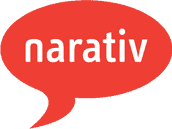Leadership training takes time and resources. Yet even with the investment, it can sometimes feel like the benefits are limited. It can seem like leaders lead in the same ways as before, and the same problems bubble to the surface time and time again. It can feel like a waste.
However, there is a world where that is not the case.
There are leaders who rise to the occasion, learning and improving, and then mentoring and assisting other new and prospective leaders. This is the world in which leadership training results in organizational improvements and individual growth.
Admittedly, the latter sounds a bit utopian. Which version of the above is the reality of leadership training? Is it a waste of money or money in the bank?
It turns out that an organization’s approach makes all the difference. You need to be thoughtful and intentional about your leadership training for the best results.
That difference starts with whether a company can identify the GAPS in their leadership training. That’s easier said than done, but we’re here to walk through what we’ve learned. Let’s break down the GAPS you need to be looking out for…

It is crucial for a business to understand what problem they are solving before they invest resources into solving it. Just like a doctor treating a sickness, the first step is to diagnose. It doesn’t do much good to treat for a broken toe when the real problem is a sore tooth. The same applies to leadership training.
Your business has specific needs that need to be addressed. Find out what they are through data collection, customer and employee surveys, and/or any number of other data gathering tools. Then use that data to focus your leadership trainings and make them specific.
One article from Harvard Business Review stressed the importance of analyzing your business frequently to determine what weaknesses you have and which of your strengths may have turned against you. These practices help keep your organization ahead of the curve, make sure your company is always growing rather than stagnating, and keep your leadership trainings fresh rather than outdated or inefficient.
Once you find what your business needs, you’re ready to move on to the next phase in our GAPS approach: what your leaders need.

When determining how to implement leadership training, it is just as important to get a thorough understanding of your leaders’ needs as it is to identify your business’ needs. Take time to proactively discover your leaders’ current skillsets, knowledge, and their preferred learning approaches. Start with internal 360-degree assessments as well as feedback from multiple sources to help determine high-priority development areas for both leaders and future leaders in the organization.
Another Harvard study found that it was important to create a psychologically safe climate if you want improvements to really gain traction. By catering your leadership trainings to your team’s needs and concerns you help them to feel heard and, therefore, safe—which will only work to improve your business.
Differences in leaders should be cherished. It’s what allows a company to thrive and consistently produce ingenuity and creativity. However, those same differences mean there may not be a one-size-fits-all solution to leadership training and helping them improve. It’s important not only to help them improve but to also help them feel comfortable and willing to share their concerns.
Another way to improve that relationship with your leadership is to seek their feedback. Let’s move on to the P in our GAPS…

One company studied by college researchers—like many others—fumbled through trainings that didn’t work. However, once they established a system of feedback with their company’s leadership, they were able to pinpoint the problems that were keeping the company from improving.
Feedback is key to success. Whether from employees or customers, companies that use the feedback they receive prove more successful than those that don’t. This applies to leadership trainings as well. Set up opportunities to measure the success of the leadership training every step of the way, through a combination of observations, evaluations, surveys, and one-to-one interviews:
- What was your leaders’ reaction to the training? How engaged were they?
- What did they learn and retain from the training?
- How has their behavior changed as a result in the weeks that follow?
- How do the results measure up to the needs the training was addressing? Which challenges have been resolved and which are still a work in progress?
Not only will this allow you to see which leadership trainings help and which fall flat, but it will also help you know which leadership training topics need to be approached again and how each of your leaders is improving from experience to experience.
This feedback is invaluable and will create a natural flow of information you can continually use to improve your leadership training and your business.

Another article by Harvard Business Review reported, “From all these streams of research we’ve learned that education and training gain the most traction within highly visible organizational change.”
Specifically, by using the feedback you’ve gathered and being transparent about expectations and the results of leadership trainings you will open the door for clarity and unity. By sharing expectations with your leadership team upfront, they will have a clearer focus on the priorities during the training and will be more invested in being part of the change. And share the results as well—even if they aren’t positive at first. This includes the return on investment of the leadership training.
One of the benefits to approaching leadership training as an iterative and transparent process is that there is an ongoing opportunity to test, learn, and improve. Plus, when you are transparent your team is more likely to problem-solve together to improve the situation. This also helps your leadership team give you the feedback we mentioned earlier—which in turn helps you cater to their needs and your business’s needs. It all comes full circle.
Bridging the Gaps
Leadership training is a strong tool, but it’s not an automatic miracle pill. Trainings must be designed so they help leaders become the best they can be. When leadership training is done well it empowers and inspires—and that will reflect in your business.
If you are interested in learning how you can help to engage your team in effective leadership training, check out our Business Storytelling Training and learn how to use storytelling to create a valuable environment to help people listen to each other more effectively.




